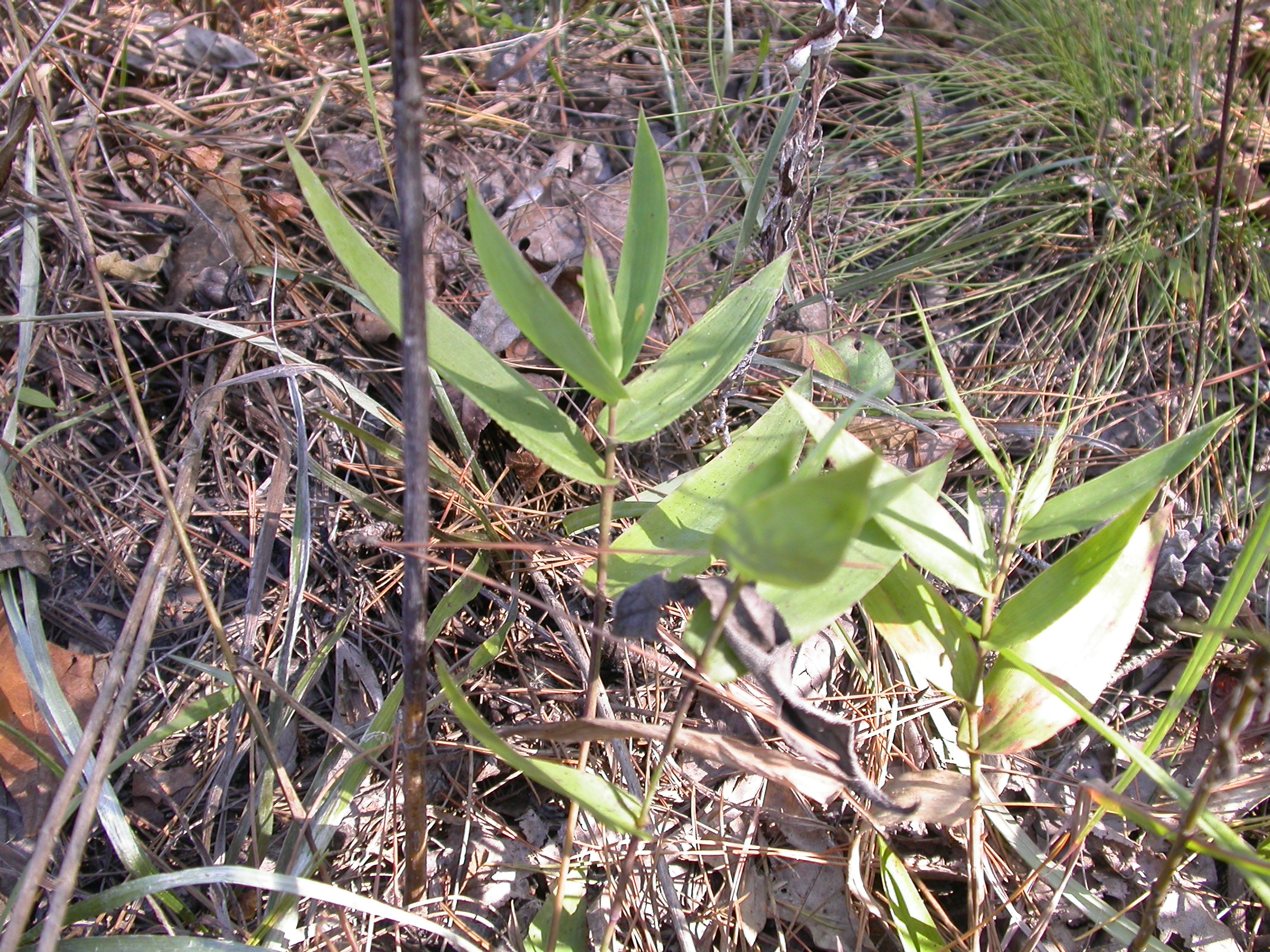Difference between revisions of "Dichanthelium ravenelii"
(→Photo Gallery) |
(→Ecology) |
||
| Line 25: | Line 25: | ||
==Ecology== | ==Ecology== | ||
===Habitat=== <!--Natural communities, human disturbed habitats, topography, hydrology, soils, light, fire regime requirements for removal of competition, etc.--> | ===Habitat=== <!--Natural communities, human disturbed habitats, topography, hydrology, soils, light, fire regime requirements for removal of competition, etc.--> | ||
| − | Calcareous coastal hardwood hammock, calcareous glades, edges of limesinks, pine-oak sandhills, live oak woods, mixed deciduous forests, upland longleaf and shortleaf pine native communities, banks of hardwood forested rivers (FSU Herbarium). Occurs in a wide range of soil conditions from deep sands to clay and forest humus (FSU Herbarium). Can occurs in highly disturbed areas, particularly if sandy (FSU Herbarium). Tolerates full light to partially shaded conditions (FSU Herbarium). Apparently limited to well-drained areas even if near wetlands or water bodies (FSU Herbarium). | + | Calcareous coastal hardwood hammock, calcareous glades, edges of limesinks, pine-oak sandhills, live oak woods, mixed deciduous forests, upland longleaf and shortleaf pine native communities, banks of hardwood forested rivers (FSU Herbarium). Occurs in a wide range of soil conditions from deep sands to clay and forest humus (FSU Herbarium). Can occurs in highly disturbed areas, particularly if sandy (FSU Herbarium). Tolerates full light to partially shaded conditions (FSU Herbarium). Apparently limited to well-drained areas even if near wetlands or water bodies (FSU Herbarium). It thrives in frequently burned areas. |
===Phenology=== <!--Timing off flowering, fruiting, seed dispersal, and environmental triggers. Cite PanFlora website if appropriate: http://www.gilnelson.com/PanFlora/ --> | ===Phenology=== <!--Timing off flowering, fruiting, seed dispersal, and environmental triggers. Cite PanFlora website if appropriate: http://www.gilnelson.com/PanFlora/ --> | ||
| − | + | It flowers April-September and fruits April-October in Florida. | |
===Seed dispersal=== | ===Seed dispersal=== | ||
===Seed bank and germination=== | ===Seed bank and germination=== | ||
| Line 34: | Line 34: | ||
===Use by animals=== <!--Herbivory, granivory, insect hosting, etc.--> | ===Use by animals=== <!--Herbivory, granivory, insect hosting, etc.--> | ||
===Diseases and parasites=== | ===Diseases and parasites=== | ||
| + | |||
==Conservation and Management== | ==Conservation and Management== | ||
==Cultivation and restoration== | ==Cultivation and restoration== | ||
Revision as of 10:40, 13 July 2015
| Dichanthelium ravenelii | |
|---|---|

| |
| Photo by Kevin Robertson | |
| Scientific classification | |
| Kingdom: | Plantae |
| Division: | Magnoliophyta - Flowering plants |
| Class: | Liliopsida – Monocotyledons |
| Order: | Cyperales |
| Family: | Poaceae ⁄ Gramineae |
| Genus: | Dichanthelium |
| Species: | D. ravenelii |
| Binomial name | |
| Dichanthelium ravenelii (Scribn. & Merr.) Gould | |

| |
| Natural range of Dichanthelium ravenelii from USDA NRCS Plants Database. | |
Contents
Description
Common Name: Ravenel's rosette grass
Distribution
TX, OK, MO, IA, IL, KY, TN, AR, LA, MS, AL, FL, GA, SC, NC, VA, MD, DE[1]
Ecology
Habitat
Calcareous coastal hardwood hammock, calcareous glades, edges of limesinks, pine-oak sandhills, live oak woods, mixed deciduous forests, upland longleaf and shortleaf pine native communities, banks of hardwood forested rivers (FSU Herbarium). Occurs in a wide range of soil conditions from deep sands to clay and forest humus (FSU Herbarium). Can occurs in highly disturbed areas, particularly if sandy (FSU Herbarium). Tolerates full light to partially shaded conditions (FSU Herbarium). Apparently limited to well-drained areas even if near wetlands or water bodies (FSU Herbarium). It thrives in frequently burned areas.
Phenology
It flowers April-September and fruits April-October in Florida.
Seed dispersal
Seed bank and germination
Fire ecology
Pollination
Use by animals
Diseases and parasites
Conservation and Management
Cultivation and restoration
Photo Gallery
References and notes
FSU herbarium herbarium.bio.fsu.edu
- ↑ NRCS Plants Databasehttp://www.nrcs.usda.gov/wps/portal/nrcs/main/national/programs/
